Definition and example of “crochet border tips”
“Crochet border tips” refer to techniques and guidelines for creating decorative and functional borders on crocheted projects. Borders can enhance the aesthetics, durability, and versatility of crocheted items, adding a touch of elegance, structure, or functionality. From simple edging to elaborate lace patterns, the choice of border depends on the desired effect and the crocheter’s skill level.
Importance, benefits, and historical context
Borders play a crucial role in crochet by framing and defining the edges of projects. They provide a neat and polished finish, preventing unraveling and adding strength to the overall structure. Borders can also enhance the visual appeal of crocheted items, creating intricate patterns, adding texture, or incorporating contrasting colors. Historically, crochet borders have been used in various cultures to embellish clothing, home dcor, and accessories, showcasing the creativity and artistry of crocheters.
Transition to main article topics
This comprehensive guide will delve into the realm of crochet border tips, providing detailed instructions, helpful hints, and inspiring ideas. We will explore different types of borders suitable for various projects, from beginner-friendly options to advanced techniques. Along the way, we will discuss essential considerations such as yarn selection, hook size, and joining methods to ensure successful border creation. Whether you seek to enhance your existing crochet skills or embark on a new project, this guide will equip you with the knowledge and inspiration to elevate your crocheted creations with stunning borders.
Crochet Border Tips
Mastering crochet border tips unlocks a world of possibilities for enhancing the beauty, durability, and versatility of your crocheted projects.
Here are eight key aspects to consider when creating stunning borders:
- Yarn Selection: Choose the right yarn weight and fiber content for your border’s intended purpose and aesthetic.
- Hook Size: Select a hook size that complements the yarn weight and stitch pattern, ensuring balanced and even stitches.
- Stitch Pattern: Explore a variety of stitch patterns, from simple to intricate, to create borders that add texture, interest, and visual appeal.
- Edging Options: Discover different edging techniques, such as picots, scallops, and fringe, to add delicate or bold finishing touches.
- Joining Methods: Learn invisible join techniques to seamlessly connect border rounds and create a polished look.
- Color Combinations: Experiment with contrasting or complementary colors to create borders that pop or blend subtly with the main project.
- Functional Borders: Create borders that serve a purpose beyond aesthetics, such as drawstrings, buttonholes, or lace trim.
- Blocking and Finishing: Block and finish your borders properly to set the stitches, enhance their shape, and give your project a professional touch.
These key aspects are interconnected and influence the overall success of your crochet border.
By carefully considering each element, you can create borders that elevate your crocheted projects to the next level. From intricate lace edgings that frame a delicate doily to sturdy drawstrings that secure a cozy blanket, the possibilities are endless.
Embrace these tips and embark on a journey of crochet border mastery, transforming your handmade creations into works of art.
Yarn Selection
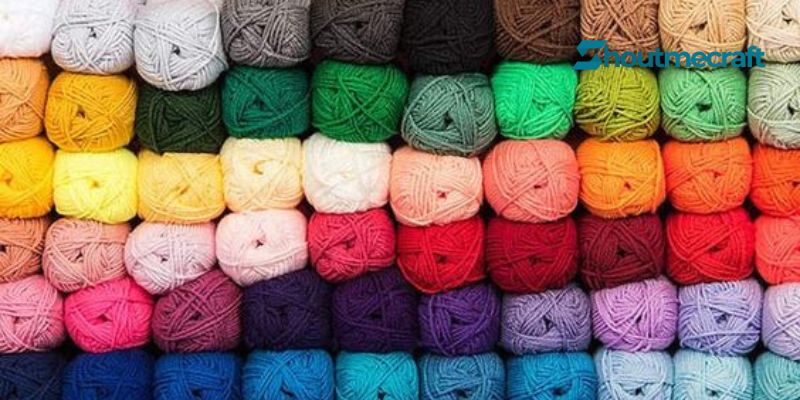
Yarn selection is a crucial aspect of crochet border tips, as it directly impacts the border’s appearance, durability, and functionality.
The weight and fiber content of the yarn should be carefully considered to align with the intended purpose and aesthetic of the border.
For instance, a delicate lace border on a doily would require a fine, lightweight yarn with good drape, such as cotton or silk.
Conversely, a sturdy border on a blanket that will receive frequent use should be made with a thicker, more durable yarn, such as acrylic or wool. The fiber content also affects the border’s texture, warmth, and care requirements.
Understanding the connection between yarn selection and crochet border tips empowers crocheters to make informed decisions that enhance the overall quality and appeal of their projects.
By choosing the right yarn, crocheters can create borders that perfectly complement the main fabric, accentuate the desired style, and withstand the intended use.
Hook Size
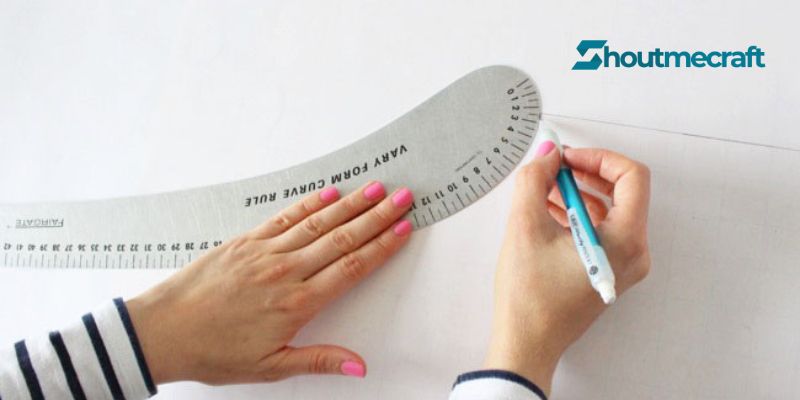
In the realm of crochet border tips, selecting the appropriate hook size is paramount.
The hook size directly influences the size, shape, and overall aesthetic of the border, as well as the ease and efficiency of the crocheting process.
- Facet 1: Balanced and Even Stitches
- A well-chosen hook size ensures balanced and even stitches, creating a uniform and visually pleasing border. When the hook size is too small, the stitches become tight and puckered, while a hook size that is too large can result in loose and uneven stitches.
- Facet 2: Stitch Definition and Detail
- The hook size can also affect the definition and detail of the border’s stitch pattern. A smaller hook size creates denser stitches, resulting in a more intricate and detailed border. Conversely, a larger hook size produces looser stitches, yielding a more open and airy border.
- Facet 3: Yarn Weight Compatibility
- The hook size must complement the weight of the yarn being used. A bulky yarn, for instance, requires a larger hook size to create stitches that are proportionate and visually appealing. Conversely, a fine yarn should be paired with a smaller hook size to avoid creating stitches that are too loose and floppy.
- Facet 4: Ergonomic Considerations
- The hook size can also impact the crocheter’s comfort and ergonomics. A hook that is too small can strain the hands and wrists, while a hook that is too large can make it difficult to control the stitches accurately. Choosing a hook size that feels comfortable and allows for effortless crocheting contributes to a more enjoyable and productive crafting experience.
Understanding the connection between hook size and crochet border tips empowers crocheters to make informed decisions that enhance the quality and aesthetic appeal of their borders.
By selecting the appropriate hook size, crocheters can create borders that are balanced, visually stunning, and a joy to crochet.
Stitch Pattern
In the realm of crochet border tips, stitch pattern selection plays a crucial role in determining the overall aesthetic, texture, and functionality of the border.
A well-chosen stitch pattern can elevate a simple border into a captivating design element, adding depth, interest, and visual appeal to crocheted projects.
- Facet 1: Embracing Simplicity and Complexity
- Crochet border tips encompass a wide range of stitch patterns, catering to crocheters of all skill levels. From simple, beginner-friendly stitches to intricate, advanced patterns, the choice of stitch pattern depends on the desired effect and the crocheter’s comfort level. Simple stitches, such as single crochet or half double crochet, create clean and understated borders, while more complex patterns, such as picot or shell stitches, add a touch of elegance and sophistication.
- Facet 2: Enhancing Texture and Dimensionality
- Stitch patterns play a significant role in creating texture and dimensionality in crochet borders. Popcorn stitches, for instance, introduce a delightful three-dimensional effect, while bobble stitches add a playful and tactile element. By incorporating a variety of stitch patterns, crocheters can create borders that are not only visually appealing but also engaging to the touch.
- Facet 3: Adding Visual Interest and Contrast
- Crochet border tips encourage experimentation with stitch patterns to achieve captivating visual effects. Alternating stitch patterns, using contrasting colors, or incorporating lace patterns can create borders that draw the eye and add a touch of uniqueness to crocheted projects. By carefully combining stitch patterns, crocheters can create borders that are both visually stunning and highly functional.
- Facet 4: Matching Stitch Patterns to Project Style
- The choice of stitch pattern for a crochet border should complement the style and purpose of the main project. A delicate lace border would be a suitable choice for a dainty doily, while a sturdy, textured border would enhance a cozy blanket. By considering the overall aesthetic and functionality of the project, crocheters can select stitch patterns that harmoniously blend with the main fabric and elevate the overall design.
In conclusion, exploring a variety of stitch patterns is an essential aspect of crochet border tips. By embracing simplicity and complexity, enhancing texture and dimensionality, adding visual interest and contrast, and matching stitch patterns to project style, crocheters can create borders that transform their projects into true works of art.
Edging Options
Edging options are an integral aspect of crochet border tips, offering a wide range of techniques to enhance the aesthetics and functionality of crocheted borders.
These techniques can transform a simple border into an eye-catching design element, adding a touch of elegance, playfulness, or sophistication to crocheted projects.
Cause and Effect: Edging techniques directly impact the overall appearance and functionality of crochet borders. Picots, for instance, create delicate loops that add a touch of femininity and grace, while scallops introduce a playful and whimsical element. Fringe, on the other hand, adds a touch of bohemian flair and can be used to create borders with a luxurious and dramatic effect.
Importance: Edging options provide crocheters with the versatility to customize their borders and match them to the style and purpose of the main project. A delicate lace edging would complement a dainty doily, while a sturdy, fringed edging would enhance a cozy blanket. By understanding the different edging techniques available, crocheters can create borders that seamlessly integrate with the main fabric and elevate the overall design.
Real-Life Examples: The practical significance of edging options is evident in various crocheted items. A scalloped edging adds a touch of whimsy to a baby blanket, while a picot edging lends an air of elegance to a lace tablecloth. Fringe edging is commonly used to create bohemian-style garments and accessories, adding a touch of drama and movement.
Note: Edging options are a crucial component of crochet border tips, providing crocheters with a wealth of techniques to customize and enhance their borders. By understanding the cause-and-effect relationship between edging techniques and border aesthetics, as well as the importance of matching edging options to project style, crocheters can create borders that are both visually stunning and highly functional.
Joining Methods
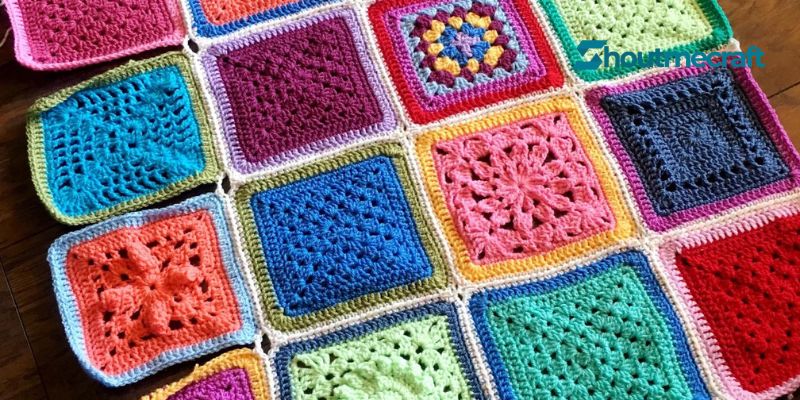
In the realm of crochet border tips, joining methods play a pivotal role in achieving a polished and professional-looking finish.
Invisible join techniques allow crocheters to seamlessly connect border rounds, creating the illusion of an uninterrupted flow of stitches.
Mastering these techniques is crucial for elevating the overall aesthetic appeal and durability of crocheted borders.
- Facet 1: Enhancing Border Aesthetics and Durability
- Invisible join techniques conceal the transition points between border rounds, resulting in a smooth and cohesive appearance. By eliminating visible gaps or bumps, these techniques create a visually pleasing border that complements the main fabric. Additionally, invisible joins enhance the durability of the border, preventing snags or unraveling at the connection points.
- Facet 2: Maintaining Stitch Tension and Uniformity
- Proper joining methods help maintain consistent stitch tension throughout the border. This ensures that the border retains its shape and dimensions, preventing distortions or puckering. By using invisible join techniques, crocheters can create borders with uniform stitches and a polished look.
- Facet 3: Expanding Design Possibilities
- Invisible join techniques open up new possibilities for border design. Crocheters can experiment with intricate patterns and motifs without worrying about visible joins interrupting the flow of the design. These techniques allow for seamless transitions between different stitch patterns, colors, or textures, enabling crocheters to create borders that are both visually stunning and unique.
- Facet 4: Practical Applications in Various Crochet Projects
- Invisible join techniques find applications in a wide range of crochet projects, from delicate doilies to cozy blankets and garments. They are particularly valuable in projects where the border serves as a decorative element or a functional component, such as a drawstring or edging. By mastering these techniques, crocheters can enhance the overall quality and appeal of their finished products.
In conclusion, joining methods are an essential aspect of crochet border tips, providing crocheters with the skills to create seamless and visually appealing borders.
Invisible join techniques enhance border aesthetics, maintain stitch uniformity, expand design possibilities, and find practical applications in various crochet projects.
By mastering these techniques, crocheters can elevate their craft and create borders that add a touch of elegance and professionalism to their handmade creations.
Color Combinations
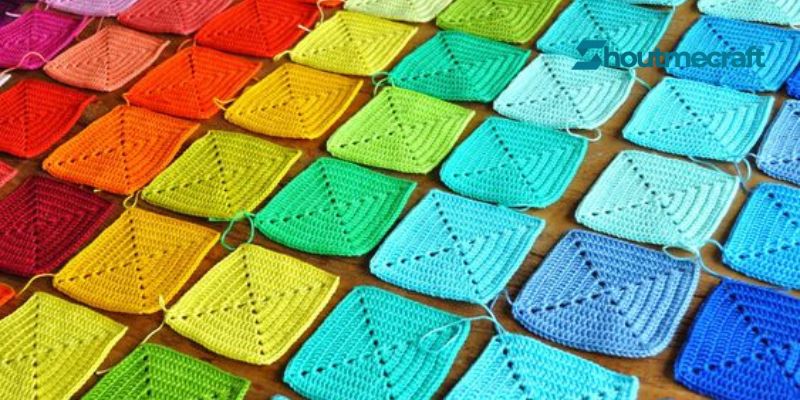
Color combinations play a vital role in enhancing the visual appeal and versatility of crochet borders.
Experimenting with contrasting or complementary colors can create striking effects that either make the border stand out or seamlessly blend it with the main fabric.
- Facet 1: Contrasting Colors for Visual Impact
- Using contrasting colors for the border creates a bold and eye-catching effect. This technique is particularly effective for borders on neutral-colored projects, where the contrasting color adds a pop of vibrancy. For instance, a bright blue border on a white tablecloth adds a touch of coastal charm, while a deep red border on a black sweater creates a sophisticated and striking look.
- Facet 2: Complementary Colors for Harmony and Depth
- Complementary colors, when placed side by side, create a sense of harmony and depth in the border. This technique is often used to create borders that blend subtly with the main fabric, resulting in a cohesive and elegant look. For example, a green border on a blue blanket complements the main color while adding a touch of depth and interest.
- Facet 3: Color Combinations for Different Projects
- The choice of color combinations for the border should complement the overall style and purpose of the main project. For delicate items like doilies or lace, pastel or neutral colors may be more suitable, while brighter or bolder colors can be used for blankets, garments, or home dcor items. Understanding the impact of different color combinations allows crocheters to create borders that enhance the overall aesthetic appeal of their projects.
- Facet 4: Color Combinations as a Design Element
- Color combinations in crochet borders can be used as a design element to create patterns or motifs. By alternating or combining different colors, crocheters can create borders with stripes, checks, or even intricate geometric designs. This technique adds a touch of creativity and uniqueness to the border, making it an integral part of the overall design.
In conclusion, experimenting with color combinations in crochet borders opens up a world of possibilities for visual enhancement and design creativity.
By understanding the impact of contrasting and complementary colors, crocheters can create borders that either stand out as bold statements or blend seamlessly with the main fabric.
The choice of color combinations should be guided by the overall style and purpose of the project, allowing crocheters to elevate their creations with visually stunning and harmonious borders.
Functional Borders
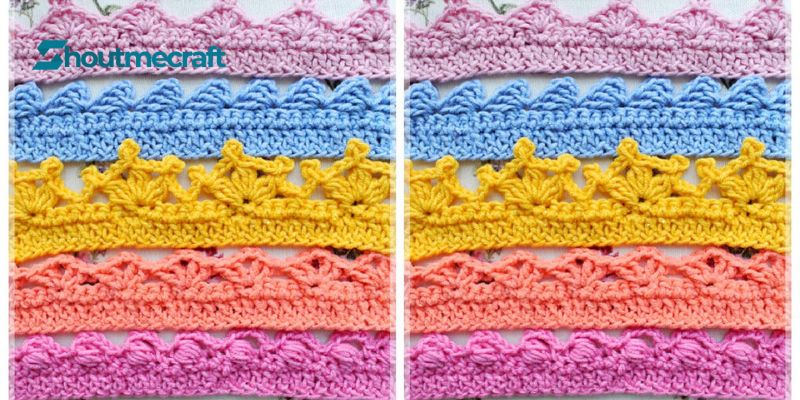
In the realm of crochet border tips, functional borders stand out as a testament to the versatility and practicality of this beloved craft.
Moving beyond the realm of mere aesthetics, functional borders seamlessly blend form and function, adding both beauty and utility to crocheted projects.
- Facet 1: Drawstrings A Blend of Style and Convenience
- Drawstrings, incorporated into crochet borders, offer a practical and stylish solution for cinching and securing garments, bags, and other accessories. These versatile borders provide adjustable closures, allowing users to customize the fit and functionality of their handmade creations.
- Facet 2: Buttonholes Embracing Elegance and Practicality
- Buttonholes, skillfully crafted into crochet borders, provide a sophisticated and secure method for fastening garments and accessories. These functional borders allow for easy dressing and undressing, adding a touch of elegance and practicality to handmade items.
- Facet 3: Lace Trim A Touch of Delicate Sophistication
- Lace trim, meticulously crocheted as a border, adds a touch of delicate beauty and sophistication to a wide range of projects. This versatile border can adorn garments, home textiles, and accessories, lending a timeless and elegant touch that elevates any creation.
- Facet 4: Beyond Aesthetics Enhancing Versatility and Functionality
- Functional borders transcend the realm of aesthetics, expanding the possibilities of crochet. By incorporating drawstrings, buttonholes, and lace trim, crocheters can create items that are not only visually appealing but also highly functional. These versatile borders enhance the practicality and durability of handmade creations, making them true works of art that stand the test of time.
In conclusion, functional borders are a testament to the boundless creativity and ingenuity of the crochet craft. By embracing these versatile and practical techniques, crocheters can elevate their creations, adding both beauty and utility to their handmade masterpieces. Functional borders seamlessly blend form and function, transforming ordinary projects into extraordinary works of art that are not only visually stunning but also highly practical.
Blocking and Finishing
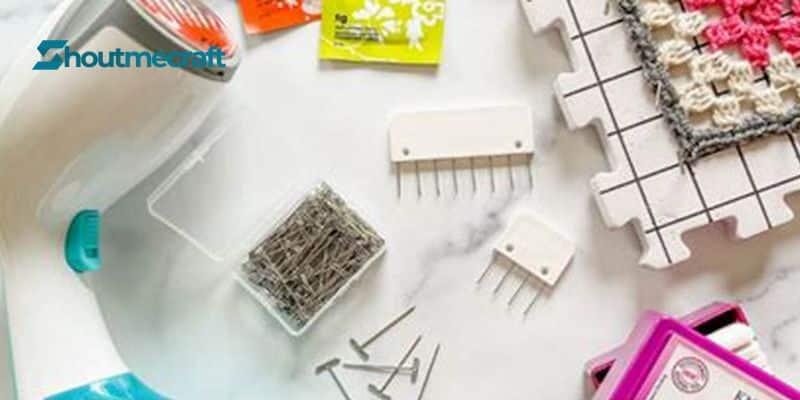
The final step in creating stunning crochet borders is blocking and finishing. This crucial process involves shaping and setting the stitches, enhancing the border’s overall appearance, and giving it a professional touch. By understanding the significance of blocking and finishing as a component of crochet border tips, crocheters can elevate their creations to the next level.
Blocking involves gently stretching and pinning the crocheted border to its desired shape and dimensions. This process allows the stitches to relax and settle into place, resulting in a crisp and defined border. Finishing techniques, such as starching or pressing, further enhance the border’s shape and give it a polished look.
The importance of blocking and finishing cannot be overstated. A well-blocked and finished border will not only look more visually appealing but will also be more durable and resistant to stretching or curling. This is particularly crucial for borders on garments or items that will be subjected to regular use or wear.
In conclusion, blocking and finishing are essential components of crochet border tips, playing a vital role in shaping, setting, and enhancing the overall appearance of the border. By incorporating these techniques into their crochet practice, crocheters can create borders that are not only beautiful but also durable and professional-looking, adding a touch of elegance to their handmade projects.
Frequently Asked Questions Crochet Border Tips
This comprehensive FAQ section addresses common concerns and misconceptions surrounding crochet border tips, providing clear and informative answers to guide crocheters in creating stunning borders.
Question 1: What is the significance of selecting the right yarn weight and fiber content for crochet borders?
The choice of yarn weight and fiber content directly impacts the border’s appearance, durability, and functionality. Heavier yarns, such as worsted weight or bulky weight, create sturdy borders suitable for blankets or bags. Conversely, lighter yarns, such as fingering weight or lace weight, are ideal for delicate borders on doilies or garments. Fiber content also affects the border’s texture, warmth, and drape.
Question 2: How does hook size influence the outcome of crochet borders?
The hook size determines the size and tightness of the stitches, affecting the overall look and feel of the border. A smaller hook size creates denser, more intricate stitches, while a larger hook size results in looser, more open stitches. Choosing the appropriate hook size for the yarn weight and stitch pattern ensures balanced and even stitches.
Question 3: What is the role of stitch patterns in enhancing crochet borders?
Stitch patterns add texture, visual interest, and dimension to crochet borders. Simple stitch patterns, such as single crochet or half double crochet, create clean and understated borders. More complex stitch patterns, such as picot or shell stitches, introduce intricate details and embellishments. Experimenting with different stitch patterns allows crocheters to customize and personalize their borders.
Question 4: How do edging options impact the aesthetics of crochet borders?
Edging options, such as picots, scallops, and fringe, provide finishing touches that enhance the border’s visual appeal. Picots add delicate loops, while scallops create a playful and whimsical effect. Fringe introduces a touch of bohemian flair and movement. Choosing the appropriate edging option complements the overall style and purpose of the crocheted item.
Question 5: What is the importance of invisible join techniques in crochet borders?
Invisible join techniques seamlessly connect border rounds, creating a polished and professional look. These techniques conceal the transition points between rounds, preventing visible gaps or bumps. Invisible joins maintain stitch tension and uniformity, ensuring the border’s integrity and durability.
Question 6: How do color combinations contribute to the overall appeal of crochet borders?
Color combinations play a vital role in enhancing the visual impact of crochet borders. Contrasting colors create bold and eye-catching borders, while complementary colors blend harmoniously with the main fabric. Experimenting with different color combinations allows crocheters to express their creativity and customize their borders to match any project style.
Note: Understanding and applying crochet border tips empowers crocheters to create borders that elevate their handmade projects. By carefully considering yarn selection, hook size, stitch patterns, edging options, joining methods, and color combinations, crocheters can achieve stunning borders that enhance the beauty, durability, and versatility of their crocheted creations.
Crochet Border Tips
Enhance the beauty and functionality of your crochet projects with these expert tips for creating stunning borders:
Tip 1: Yarn Selection and Hook Size
Choose the right yarn weight and fiber content for the desired border appearance and durability. Select a hook size that complements the yarn weight for balanced and even stitches.
Tip 2: Experiment with Stitch Patterns
Explore a variety of stitch patterns to add texture, visual interest, and dimension to your borders. Simple patterns provide a clean look, while more intricate patterns create eye-catching details.
Tip 3: Edging Options for Finishing Touches
Incorporate edging techniques such as picots, scallops, or fringe to enhance the border’s aesthetics. These options add delicate loops, playful curves, or a touch of bohemian flair.
Tip 4: Invisible Join Techniques for Seamless Borders
Master invisible join techniques to seamlessly connect border rounds, creating a polished and professional finish. These techniques conceal transition points, ensuring a smooth and cohesive border.
Tip 5: Color Combinations for Visual Impact
Experiment with contrasting or complementary color combinations to create borders that stand out or blend subtly with the main fabric. Color choices can enhance the overall appeal and style of your crocheted items.
Note: By following these tips, you can elevate the borders of your crochet projects, adding beauty, durability, and versatility to your handmade creations.
Conclusion
In summary, crochet border tips provide a wealth of knowledge and techniques to enhance the aesthetics, durability, and functionality of crocheted projects.
By understanding and applying these tips, crocheters can elevate the borders of their creations, adding beauty, durability, and versatility to their handmade masterpieces.
Whether creating intricate lace borders for delicate doilies or sturdy drawstrings for cozy blankets, mastering crochet border tips empowers crocheters to unleash their creativity and achieve stunning results.
As they continue to explore and refine their skills, crocheters can push the boundaries of their craft, creating unique and captivating borders that set their crochet projects apart.
Magic thank you so much – great learning curve, Jennifer